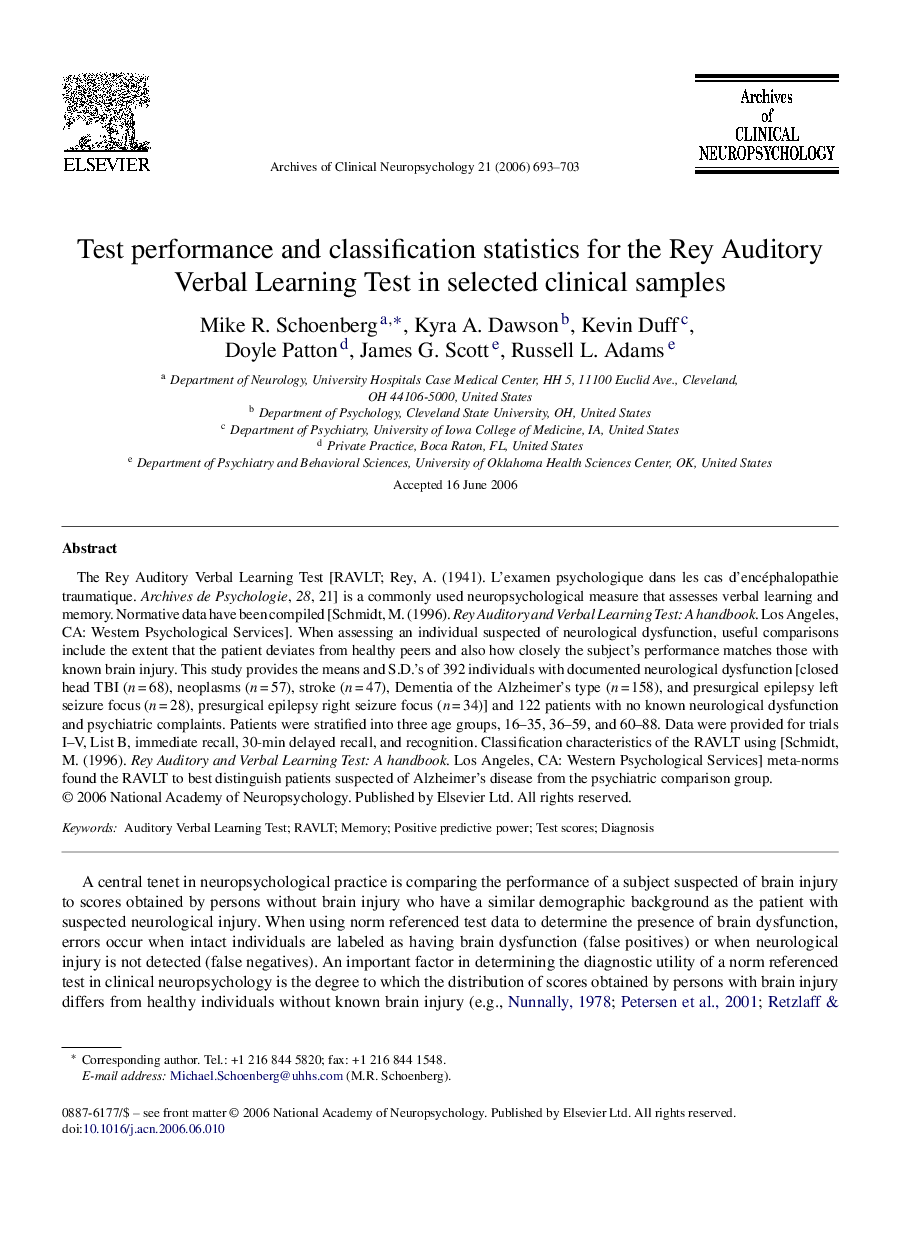| Article ID | Journal | Published Year | Pages | File Type |
|---|---|---|---|---|
| 901078 | Archives of Clinical Neuropsychology | 2006 | 11 Pages |
The Rey Auditory Verbal Learning Test [RAVLT; Rey, A. (1941). L’examen psychologique dans les cas d’encéphalopathie traumatique. Archives de Psychologie, 28, 21] is a commonly used neuropsychological measure that assesses verbal learning and memory. Normative data have been compiled [Schmidt, M. (1996). Rey Auditory and Verbal Learning Test: A handbook. Los Angeles, CA: Western Psychological Services]. When assessing an individual suspected of neurological dysfunction, useful comparisons include the extent that the patient deviates from healthy peers and also how closely the subject's performance matches those with known brain injury. This study provides the means and S.D.'s of 392 individuals with documented neurological dysfunction [closed head TBI (n = 68), neoplasms (n = 57), stroke (n = 47), Dementia of the Alzheimer's type (n = 158), and presurgical epilepsy left seizure focus (n = 28), presurgical epilepsy right seizure focus (n = 34)] and 122 patients with no known neurological dysfunction and psychiatric complaints. Patients were stratified into three age groups, 16–35, 36–59, and 60–88. Data were provided for trials I–V, List B, immediate recall, 30-min delayed recall, and recognition. Classification characteristics of the RAVLT using [Schmidt, M. (1996). Rey Auditory and Verbal Learning Test: A handbook. Los Angeles, CA: Western Psychological Services] meta-norms found the RAVLT to best distinguish patients suspected of Alzheimer's disease from the psychiatric comparison group.
